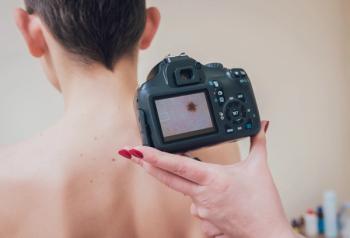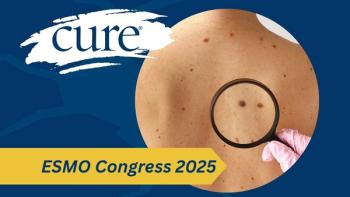
What's on the Horizon in Skin Cancer Treatment

Kristie L. Kahl: What is the current standard of care for skin cancer?
Jeremy Brauer: We initially have to start with identifying something as new, unusual or changing. In general, once you’ve taken the step of seeing your board-certified dermatologist, if it does warrant a biopsy, that’s going to be your initial step. For most, what a biopsy involves is an administration of local anesthesia, a little needle stick to numb the area. They take a piece of skin, and in general, just Aquafor or vasoline is all you’ll need, depending on the concern for the lesion, maybe a few stitches can be put in.
Then, once we diagnose and determine what kind of skin cancer it is, where it is on the body and take into account other factors of the individual (age, any other underlying medical conditions, what medications they take, where on the body the skin cancer is located), we’ll have a conversation about the risks, benefits and alternatives to various treatment options.
Kristie L. Kahl: What is the best way for patients to learn more about their options?
Jeremy Brauer: First and foremost, an honest and direct conversation with your dermatologist who can, in detail, discuss the diagnosis and expectations. The Skin Cancer Foundation is a fantastic resource. We always caution use of the internet to gather information, but the Skin Cancer Foundation, the major organizations across dermatology are other great resources. Primarily, a good, thorough conversation with your board-certified dermatologist should help you direct which way you want to go with your treatment.
Kristie L. Kahl: How has immunotherapy changed treatment for patients with skin cancer?
Jeremy Brauer: Immunotherapy, these days, we consider as a treatment option for melanoma. It’s been a game changer for a certain period of time of survival in advanced cancers. That has definitely prolonged the life of many individuals who unfortunately otherwise would not have fared as well prior to the onset of immunotherapies.
In addition to melanoma, another interesting and promising area is targeted therapy. Here, what we’re looking at is the identification within the tumor of a mutation, specifically in a gene or pathway, and then targeting that specific gene or pathway in the tumor, which has also led to increased survival rates and has really allowed for a change in the way we approach some of the more advanced tumors.
Kristie L. Kahl: What is available for these types of cancers?
Jeremy Brauer: Immunotherapy definitely has its role in the armamentarium of skin cancers, most importantly advanced skin cancers. However, that said, early intervention is key. Once we’ve detected these skin cancers, early intervention results in very high cure rates and hopefully prevents some of these local tumors from becoming metastatic or advanced tumors.
The intervention with the highest cure rate for surgical procedures is Mohs micrographic surgery. This is ideal for non-melanoma skin cancers specifically, but there is a growing interest and use in certain melanomas as well. The idea here is, depending upon the skin cancer but also the location, as long as we deem the tumors appropriate to use this technique, it is similar to the initial biopsy where you numb the area, take a small piece of skin. I liken it to a waiting game. Unlike leaving the office and waiting a week for your results, everything is done on site in real time. We process the tissue and a mohs also functions as the pathologist to read the slides and is able to map out where the tumor is or isn’t. It’s a staged excision, so we only approach it from a targeted perspective. We are not taking large circles or measuring out large margins, it’s a much more targeted approach. The benefit of this is it allows for tissue conservations, thinking about the tip of the nose and ears. Also, it has a higher cure rate with good cosmetic outcome because you are tissue sparing.
Another surgical intervention is a standard surgical excision. I mentioned margins, depending upon the location of the tumor as well as the tumor characteristics, you take a standard margin of skin…those vary. You excise, take a big piece of skin and put stitches in just like you would with mohs, but it’s not a staged procedure. In general, it’s just one procedure.
Some other non-surgical treatments include electrodesiccation and curettage. This tends to be reserved for individuals who have a superficial basal cell carcinoma or what we call in situ squamous cell carcinoma, where the lesion is very superficial and is on the upper most part of the skin. Here, what we are doing is using a tool called a curette, which is a sharp tool, to scrape the area of involvement but also with electrodesiccation where we are burning the surrounding skin. This is often repeated in series a few times to remove the majority, if not all, of the tumor. The downside to this is that we are not going to have any histologic confirmation, meaning no pathology. The goal here is to avoid having to cut and sew. The drawback is that you can’t evaluate the tissue under the microscope because you’re scraping and burning the remaining tumor cells.
Another non-surgical option is radiation therapy. This is sometimes used in conjunction with surgical treatment if it is determined that the subtype of skin cancer warrants it. We talk about something called a perineural invasion. If you find during the course of mohs surgery or if we get the specimen back after incision and we find involvement of the nerves, we would then refer the individual to receive concurrent radiation therapy. Radiation therapy is also good for non-surgical cancer. There are reasons, not just the tumor but also the individual may dictate the best approach to removal of the skin cancer. In certain instances, maybe the individual is not able to tolerate the procedure or they decline the procedure. So, radiation therapy is appropriate for these individuals. Similarly, there are certain tumors that don’t heal well that may be a better candidate for a non-surgical option.
Kristie L. Kahl: What is the most exciting treatment option out there right now?
Jeremy Brauer: I really do believe immunotherapy and targeted therapies for metastatic disease really have been a game changer. I think we will see a continued attempt to move towards minimally invasive treatments and cures for all tumors and all diseases. So, I would group skin cancer in there as well. I’m looking forward to what comes out on the horizon.
Kristie L. Kahl: What is on the horizon for patients with skin cancer?
Jeremy Brauer: Patients have a lot to look forward to. Medicine, technology and innovation are all moving at a very fast pace. Immunotherapy and targeted therapies, more of these are going to be made available to individuals with metastatic melanoma as well as advanced squamous cell carcinoma. Also, the non- and minimally-invasive biopsy techniques. Right now, a bopsy is invasive. There is numbing and taking a blade to the skin…there are other imaging techniques and the better and greater the ability becomes to detect skin cancer, whether they are benign or malignant tumors, we’ll begin to see more non-invasive biopsy techniques moving forward.
Kristie L. Kahl: How can patients become empowered to become their own best advocates for treatment decisions?
Jeremy Brauer: It starts with education. Knowledge is power. A great resource is your board-certified dermatologist, and also the resources available on reputable web sites like the Skin Cancer Foundation and all of the literature they have available. Within dermatology, there is the American Academy of Dermatology and other societies that are great resources. I do believe it begins with education.
Going back to prevention, a lot of what people need to understand is that skin cancer is serious. You can die from skin cancer. That is a known misconception. But, the good news is that these are preventable tumors and cancers. You have to take action and prevent it. How do you do that? Appropriate use of UVA or UVB spectrum sun screen, sun protected behaviors when you are outdoors, screening — not just coming to your dermatologist once a year, but also monthly self-skin examinations…Look for something new, unusual or changing and bring that to the attention of your dermatologist. Early detection results in early intervention which results in very high cure rates.
Transcription edited for clarity.





